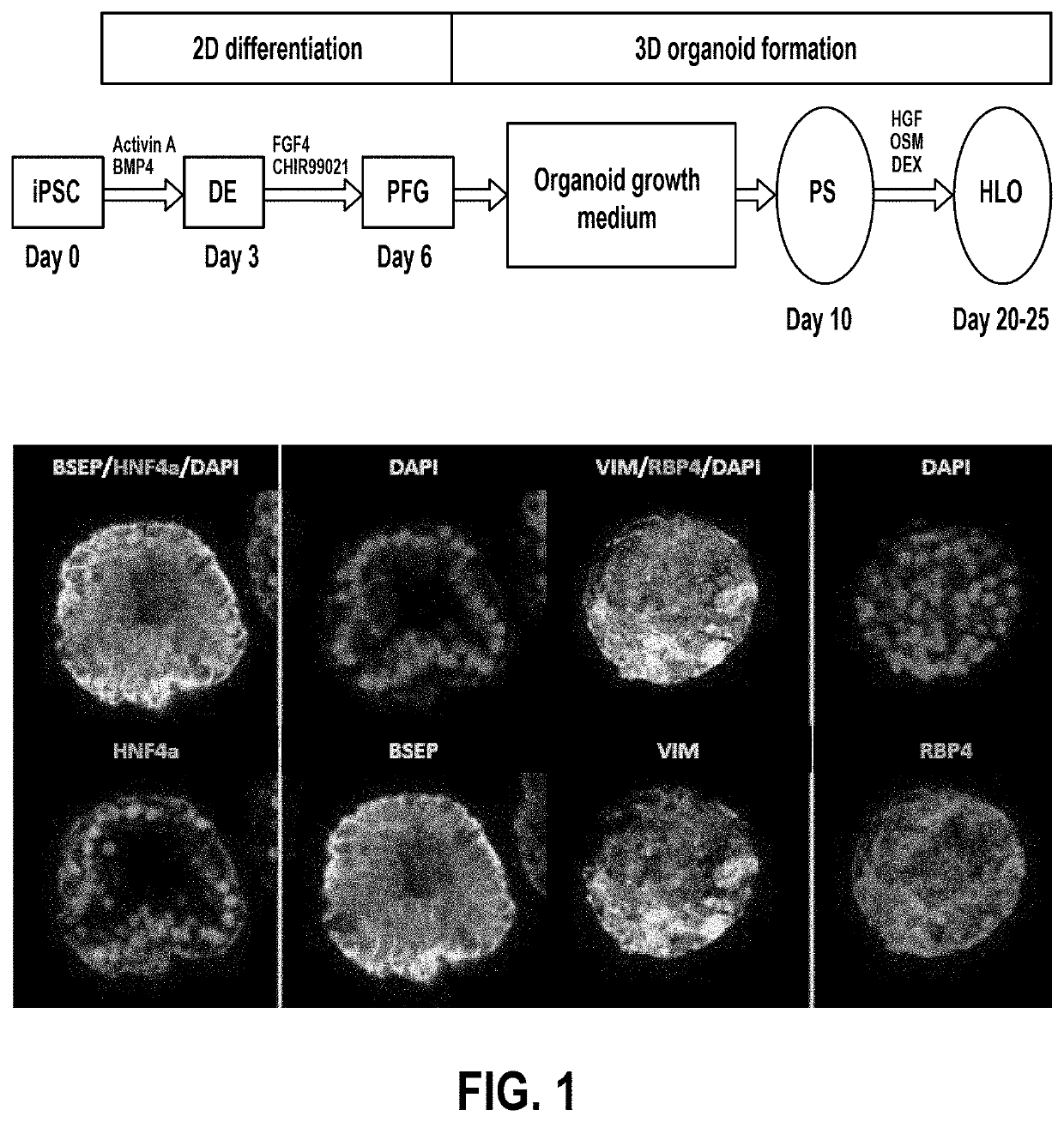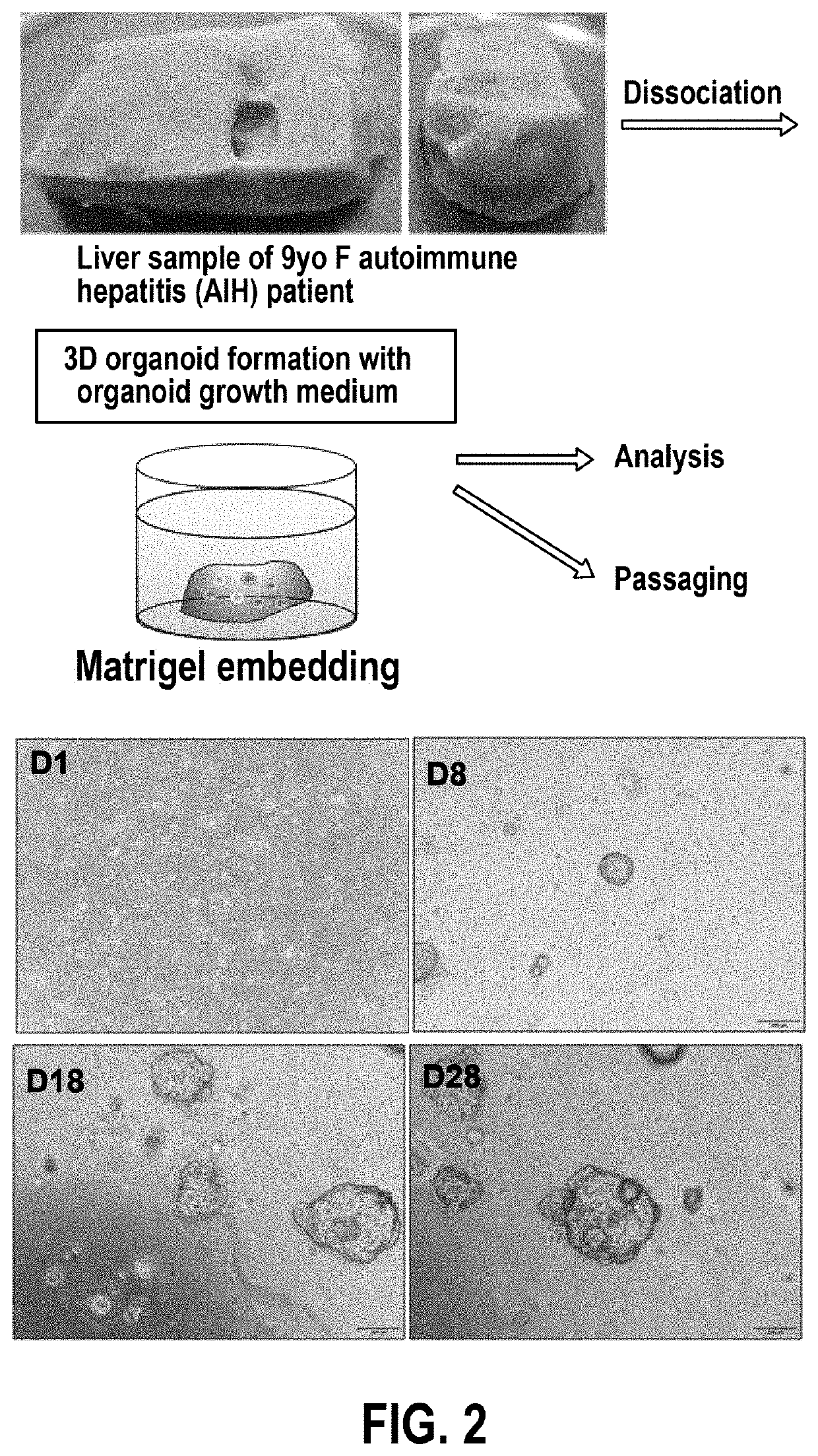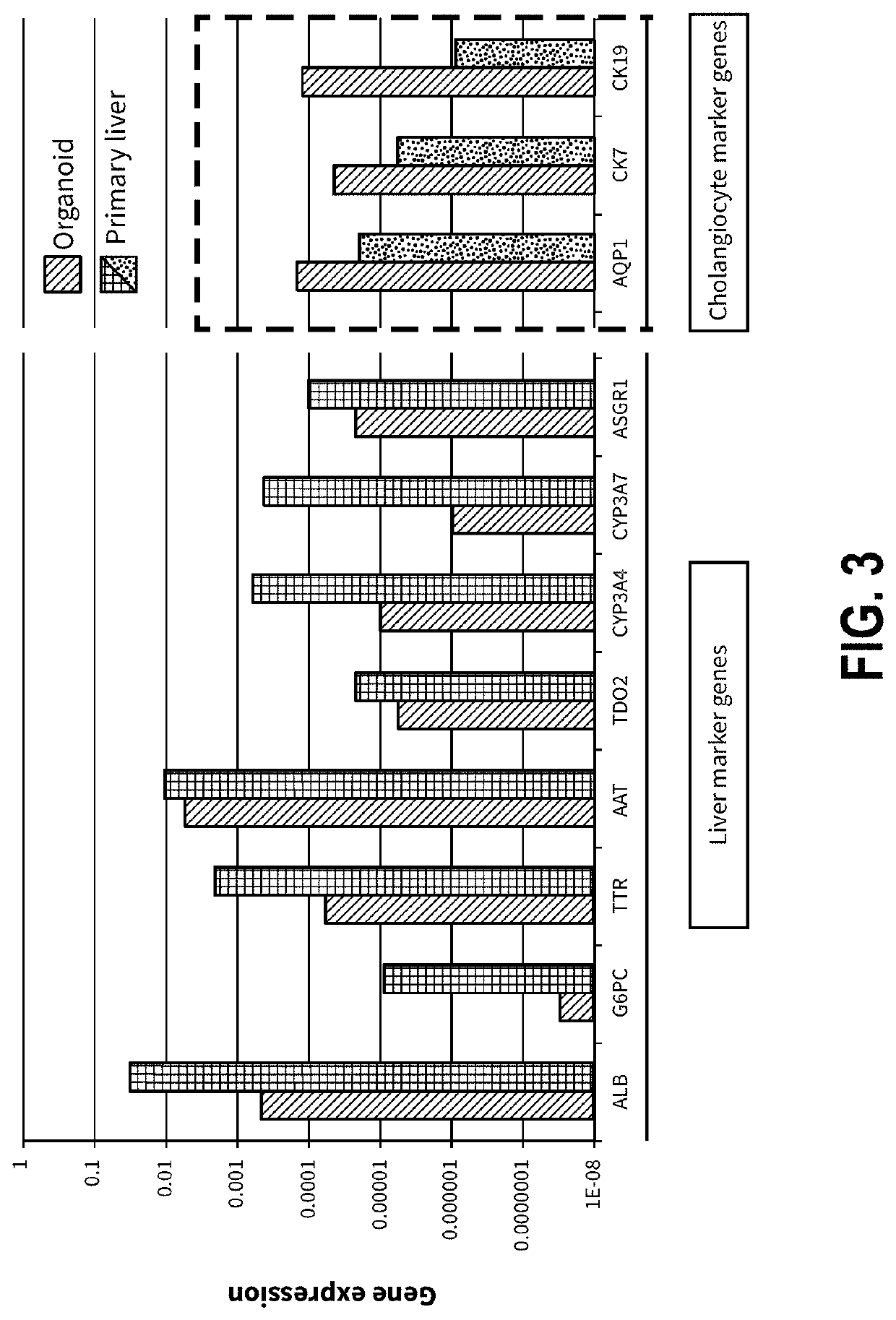Liver support system comprising liver organoids and methods of making and using same
a liver and organoid technology, applied in the field of liver organoid support system comprising liver organoids and methods of making and using same, can solve the problems of insufficient hepatocytes, insufficient liver transplantation, and inability to immediately provide livers for transplantation
- Summary
- Abstract
- Description
- Claims
- Application Information
AI Technical Summary
Benefits of technology
Problems solved by technology
Method used
Image
Examples
examples
[0061
[0062]Liver Organoid Preparation Methods
[0063]Differentiation into liver organoids. Three methods may be used to differentiate the DE into liver organoids: The “Matrigel Drop Method,” the “Matrigel Sandwich Method,” and the Matrigel-Free Method,” each of which is described below.
[0064]Matrigel Drop Method: On Day 7-8, definitive endoderm organoids with plated cells were gently pipetted to delaminate from dishes. Isolated spheroids were centrifuged at 800 rpm for 3 minutes and, after removing supernatant, embedded in 100% matrigel drop on the dishes. The plates were placed at 37° C. in an atmosphere of 5% CO2 / 95% air for 5-15 min. After the Matrigel was solidified. Advanced DMEM / F12 was added with B27, N2 and Retinoic acid (RA; Sigma, St. Louis, Mo.) 2 μM for 1-5 days. The media was replaced every other day. After RA treatment, organoids embedded in Matrigel drop were cultured in Hepatocyte culture medium (HCM Lonza, Walkersville, Md.) with 10 ng / mL hepatocyte growth factor (HGF...
PUM
| Property | Measurement | Unit |
|---|---|---|
| volume | aaaaa | aaaaa |
| time | aaaaa | aaaaa |
| time | aaaaa | aaaaa |
Abstract
Description
Claims
Application Information
 Login to View More
Login to View More - R&D
- Intellectual Property
- Life Sciences
- Materials
- Tech Scout
- Unparalleled Data Quality
- Higher Quality Content
- 60% Fewer Hallucinations
Browse by: Latest US Patents, China's latest patents, Technical Efficacy Thesaurus, Application Domain, Technology Topic, Popular Technical Reports.
© 2025 PatSnap. All rights reserved.Legal|Privacy policy|Modern Slavery Act Transparency Statement|Sitemap|About US| Contact US: help@patsnap.com



